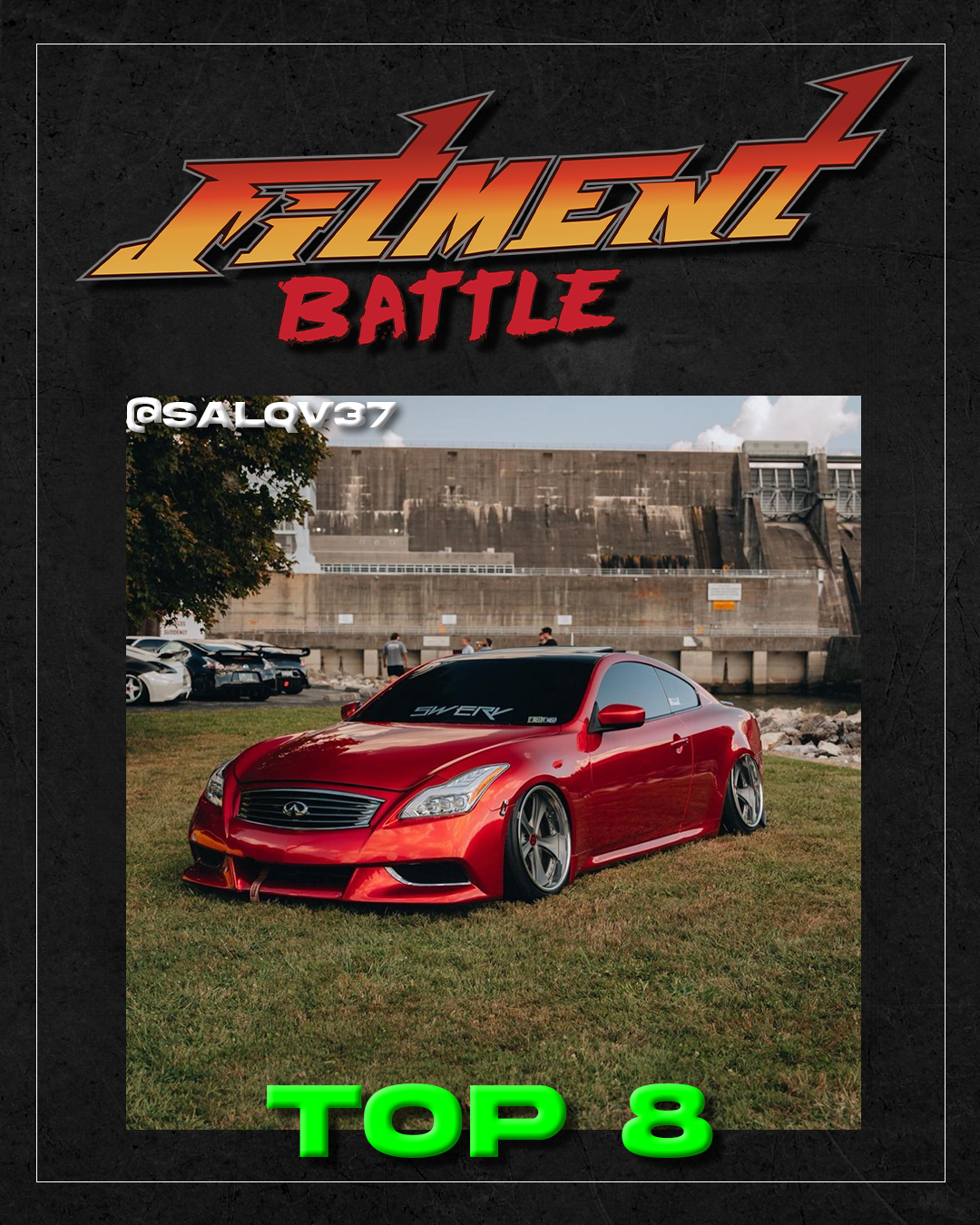Every type of wheel fitment | a complete guide
Feb 14th 2024
Ever screw up your wheel fitment? It’s all good, we can help you out.
Today we’re looking at different kinds of fitment. We broke them down into these categories:
OEM fitment
There isn’t a whole lot to talk about here. This is what your car came with from the factory. Usually, your wheels will be inset a couple of inches from the fenders. Most cars will have a lot of wheel gap vertically and horizontally - the overall track width of your car is narrow, plus Shaquille O’Neal’s size 22 sneakers would fit between the tire and fender.

Performance oriented vehicles, especially modern ones, sometimes have acceptable or even decent fitment. If this is you, why are you here? If you’re reading this, you probably have weak factory fitment and are looking to change it. Don’t worry, we’ll fix that, keep reading.
Tucked fitment
This means you bought too high of an offset. The wheels are pushed in the fenders a couple of inches, similar to stock fitment. This typically isn’t the desired result. While it won’t ruin performance, it also isn’t likely to win any trophies at a car show.
Both tucked and OEM fitment can be saved with wheel spacers. But this isn’t the same as properly fitting aftermarket wheels, only a quick fix if you're on a limited budget.
Tucked stance
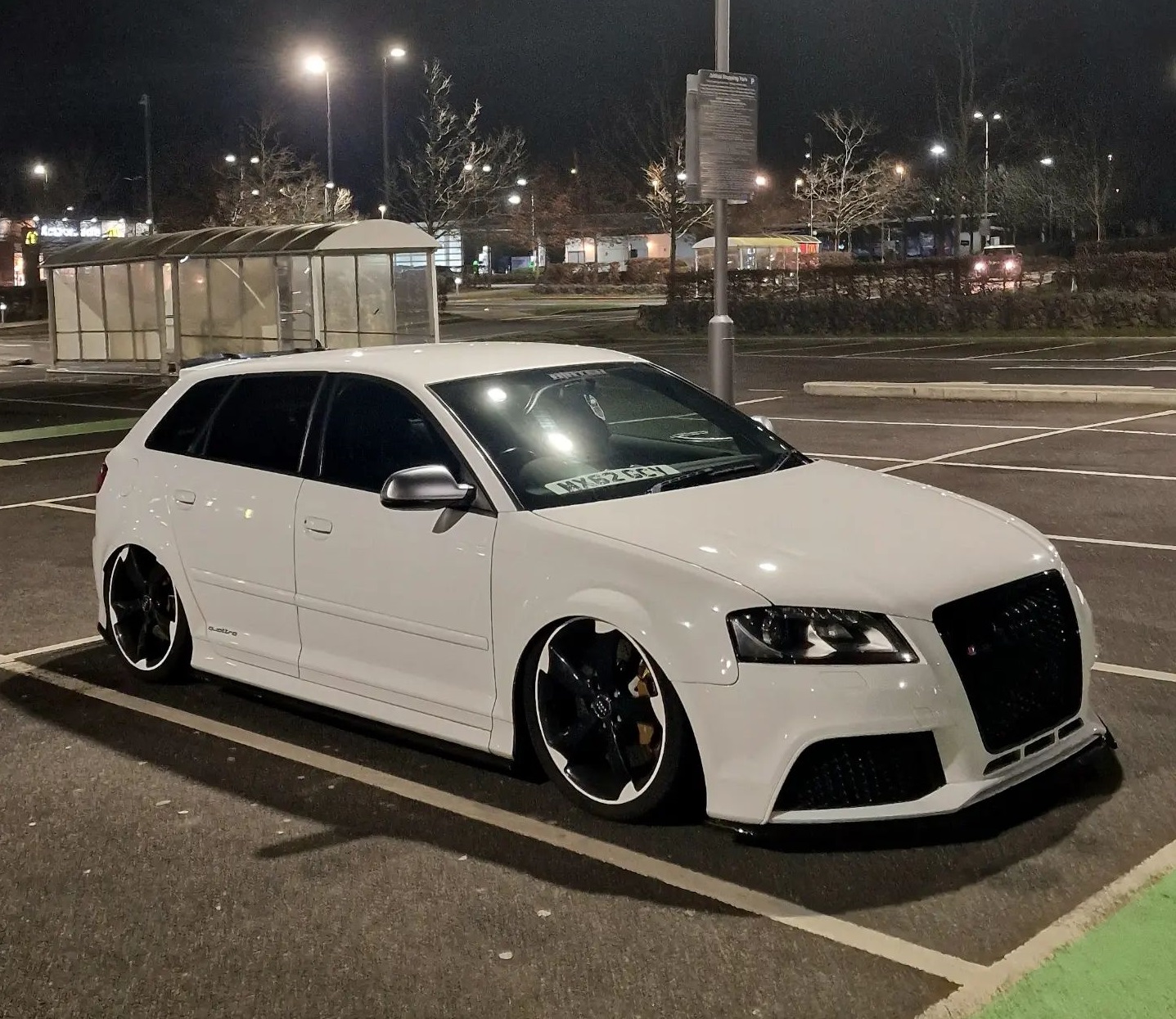
If you intend to bury the lip of your wheel in the fender, you might be going for tucked stance fitment. The difference is that the outer lip of your wheel is much closer to the fender, as opposed to being so tucked that you need binoculars to see ‘em.
Tucked stance is achieved by selecting wheel specs that are close to flush fitment, then tinkering with suspension so the fender swallows the wheel. Cars with this fitment are low. Most of them are on bags, or if the owner is crazy enough - static on coilovers. To actually tuck the wheel, a generous serving of negative camber is applied. This combination of low with a lot of camber ruins performance and driveability, hence why air suspension is used.
The difference between tucked and tucked stance is that the latter actually turns heads.
Flush fitment
In our opinion, this is what you want. When looking from the front or rear, your wheels are vertically aligned with the fender. Flush is a good mix of aesthetics and performance.
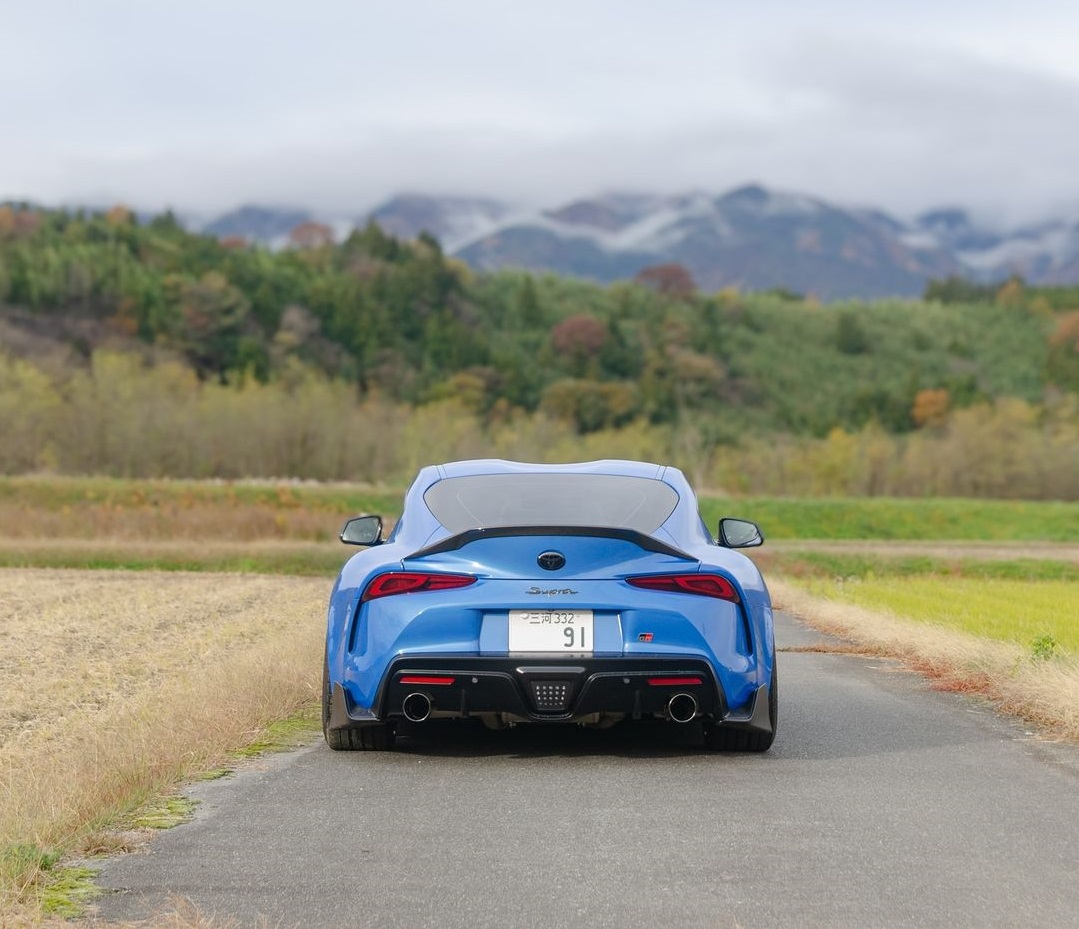
This fitment looks better with minimal wheel gap, however it's still functional fitment. To make this viable, you’ll need coilovers to prevent the tire from smacking the fender. When done correctly, you’ll have a properly tuned suspension that can take bumps without bottoming out. You’ll also get the benefit of a wider track width. Wider wheels and tires cut down lap times or improve your ¼ mile.
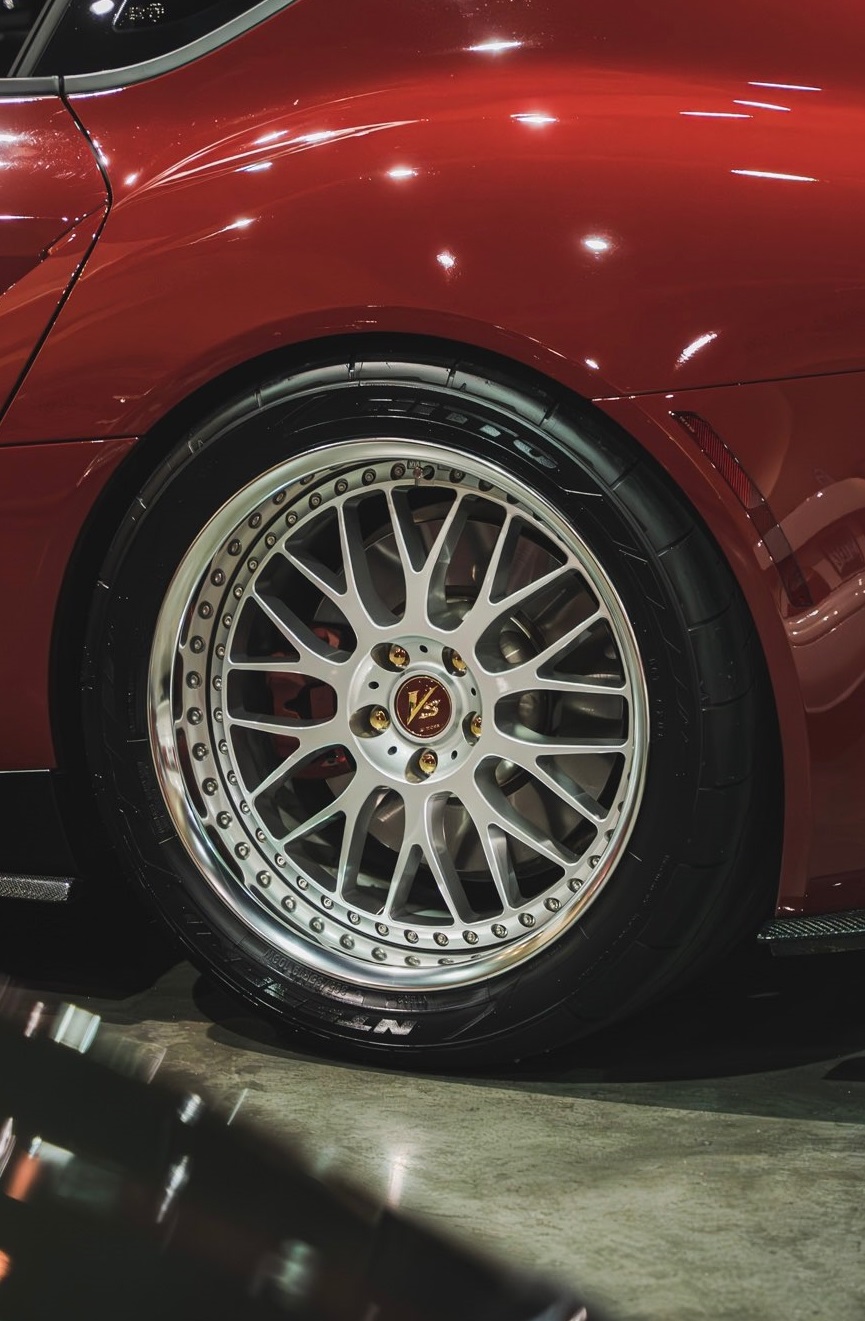
Flush fitment uses square-fitting tires, not stretched, nor balloon spec. It’s practical fitment. A good rule of thumb is to take: wheel width X 25. For example, a 9.5J should run a 235, a 10.5 should run a 255-265 wide tire.
But how do you know the wheel specs? Width? Offset? We have resources to help you. You can talk with one of our fitment experts or take a look at the vehicle gallery . The gallery is a good alternative to scrolling through Instagram or forums for hours trying to find the perfect fitment. We have pictures of vehicles with all the fitment specs you could ever need.
Stance fitment
This one is a bit contentious. Stance fitment involves getting your car as low as possible while bringing the outer lip of the rim intimately close to the fender. Effectively, the fender sits on the lip. Stance is the less functional version of flush. If it were stats in a video game, it would be +30 in aesthetics and -50 in performance, compared with flush fitment. The only requirement for performance is that the car remains driveable.
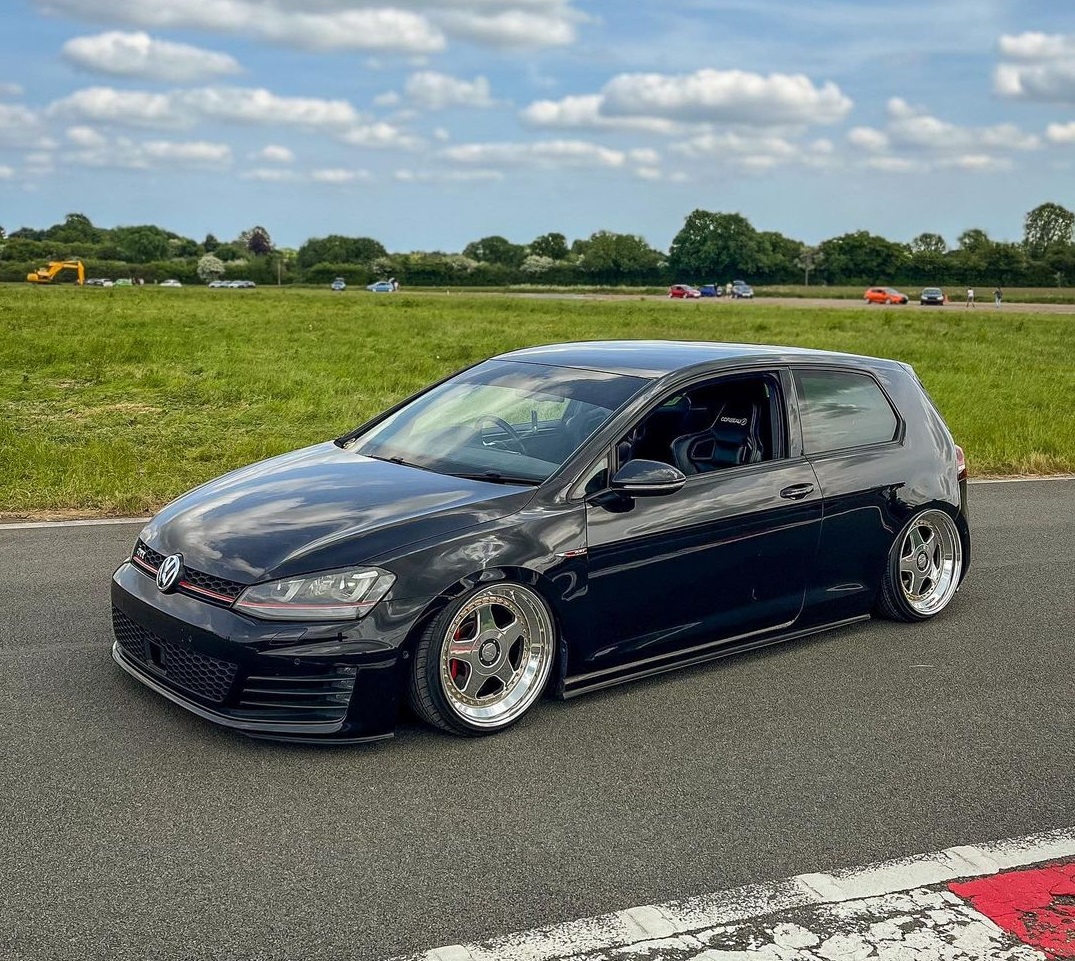
Like tucked fitment, air suspension works well here. This lets you show up to the meet, hardpark, then air up before you leave to get over speedbumps. If you’re a mad lad, you can run fender-to-lip fitment on coilovers - but make sure you get some stiff spring rates on them.
You’re gonna need coils or air. Unfortunately, stance won’t work with lowering springs, despite what that dude on a forum said. They won’t let you go low enough; even if they did, they aren’t stiff enough… your car will be undriveable.
While flush fitment has a square sidewall, stance fitment requires a stretched tire. If your local big-box tire shop refuses to mount ‘em, you're on the right track. A 225 wide tire on a 10” is an example of a well-stretched tire. If you wanna nerd out, check out tyrestretch, a gallery just for stretched tires.
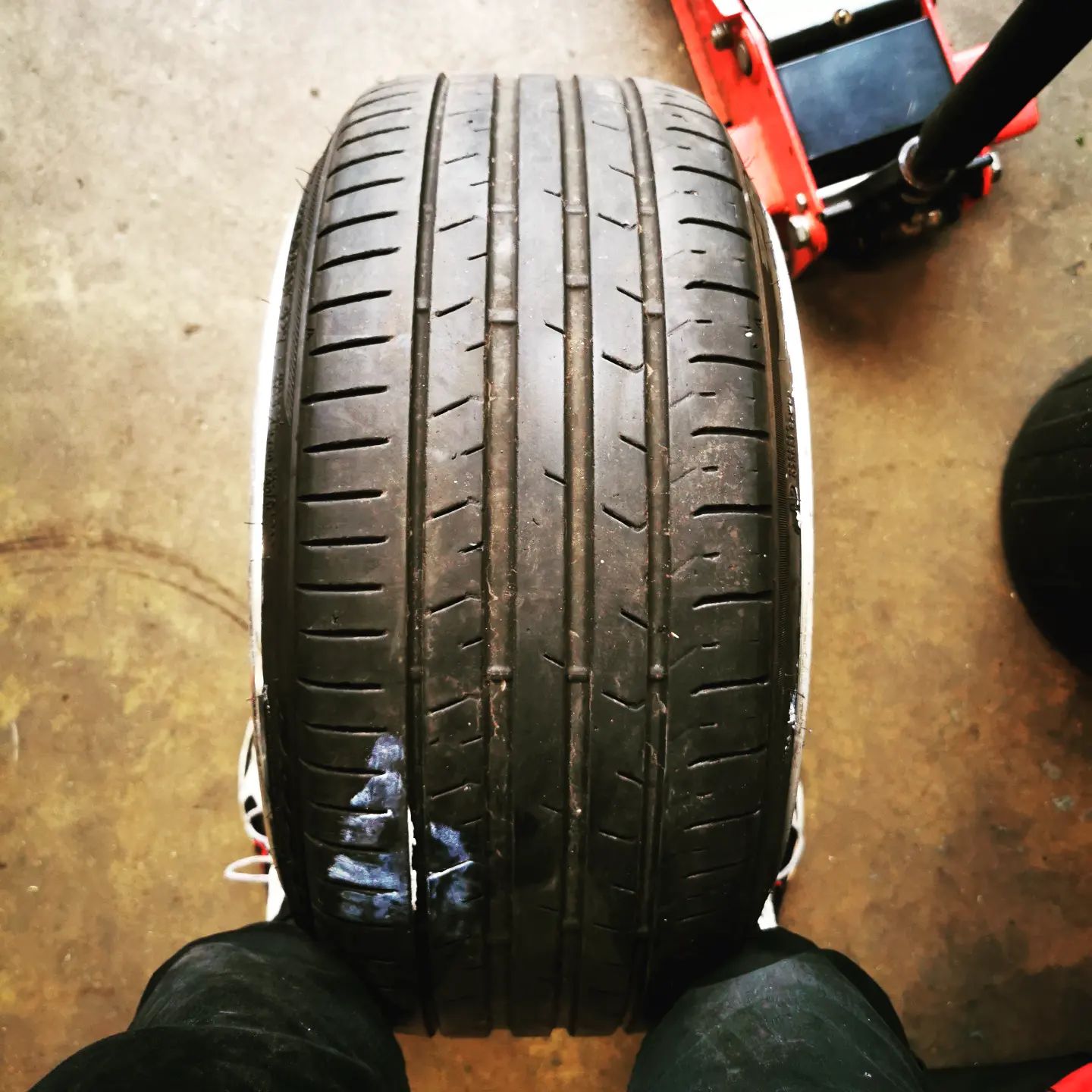
To dial in the alignment, you’ll need adjustable camber arms, control arms, traction arms… all the arms… If you wanna retain some functionality, things like drop knuckles and other roll-correction can be used. But regardless of the mods, you’re gonna loose performance. Excess negative camber creates a smaller contact patch, meaning less mechanical grip, additionally, stance cars are so low that the shocks will constantly bottom out. Bump steer is a condition that causes temporary misalignment when hitting a bump, leading to jerky, unwanted movements.
You probably won’t see a stance car seriously competing in motorsports, that’s not the point. However, they’re acceptable for street cars. If this is the look you want, you’re after form > function anyway.
Onicamber
Onicamber, or demon camber, is a subgenre of stance fitment. This is the look that resembles a squished Hot Wheels, something like this: /==\ It involves running a significant amount of camber front & rear - like -10 °.
In the front, you’ll need to adjust your camber plates to max negative. More dubious methods include slotting the camber plates or perch. In the rear, RUCAs (rear upper control arms) normally give you more than enough to get the job done.
Obviously, any performance goes out the window. Expect to put a ton of wear on wheel bearings, ball joints, tie rods, bushings and even the frame of your vehicle. The extra-cambered life isn’t for everyone; and we must admit, it can look a little goofy, however, we can still respect the attention to detail needed for this type of look.
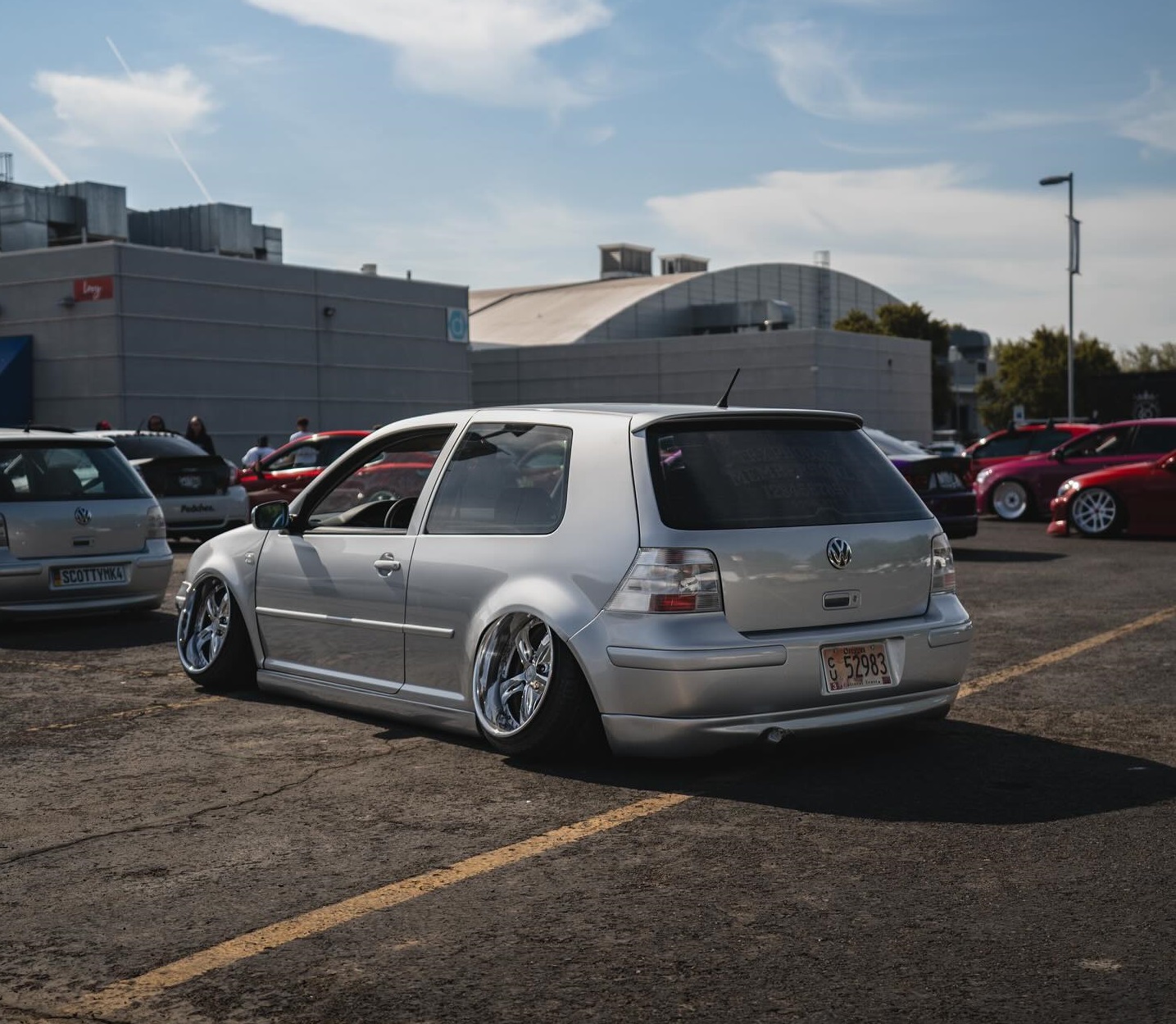
Poke fitment - oops, you f****d up
Shoulda used our vehicle gallery.
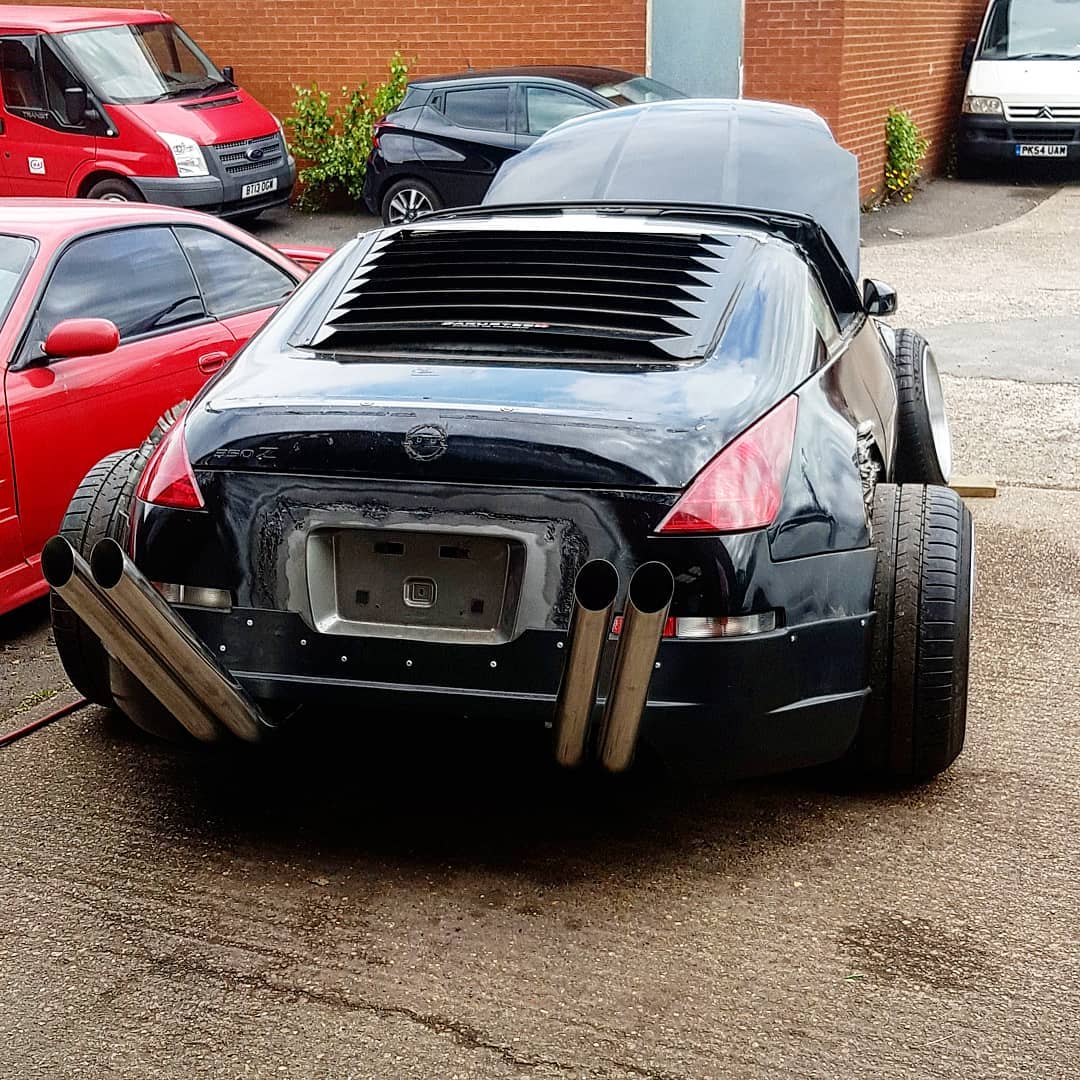
This refers to fitment where the wheel and tire stick out past the fender - not just the wheel, that's a different type of fitment (more soon). If the wheel and tire poke out more than an inch or so, you probably made a mistake somewhere. We’re not gonna tell you how to achieve this as it’s an undesirable look. But how to fix it?
If you got three piece wheels, you can downsize the lips to make them work. Otherwise, options involve adding tires with more stretch or a shit ton of camber, effectively creating stance/onicamber/outlip fitment.
Unfortunately, the best approach would be to list the wheels up on your favorite classifieds, get a million “is this still available” messages, then sell ‘em and contact us for some properly fitting wheels.
Poke fitment, but on a truck
Unlike a car, this is desirable. Poke can be seen on both show and offroad truck builds. Pretty simple look to pull off: put some small tires with big rims, or small rims with big tires. Poke on a truck looks mean af.
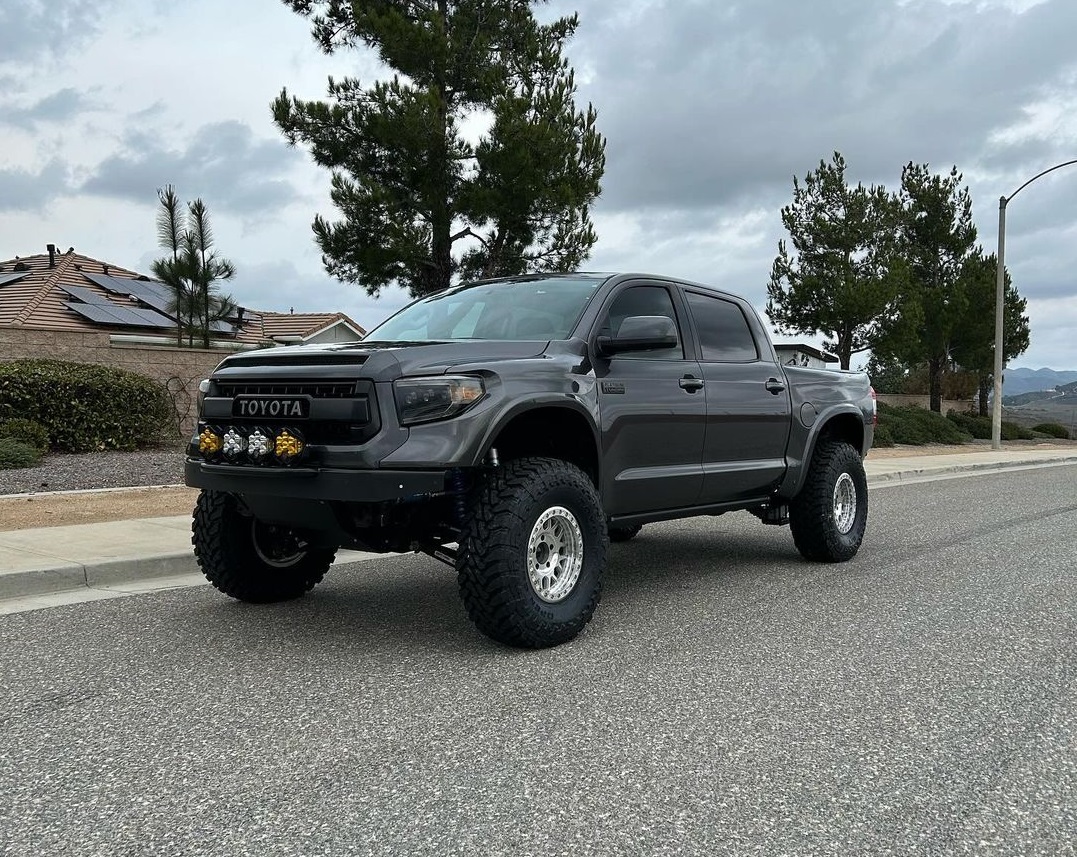
But there are some caveats. For one, the wider you go, the more lift you’re going to want - things should remain proportional. You don’t want 5” of poke on a leveling kit, it won’t look right. Likewise, you don’t wanna build a prerunner that looks like it skipped leg day. Second, the wider you go, the more debris you’ll be slinging. If you wanna keep your truck clean, consider something a bit less aggressive, or maybe some fender flares.
Outlip style fitment
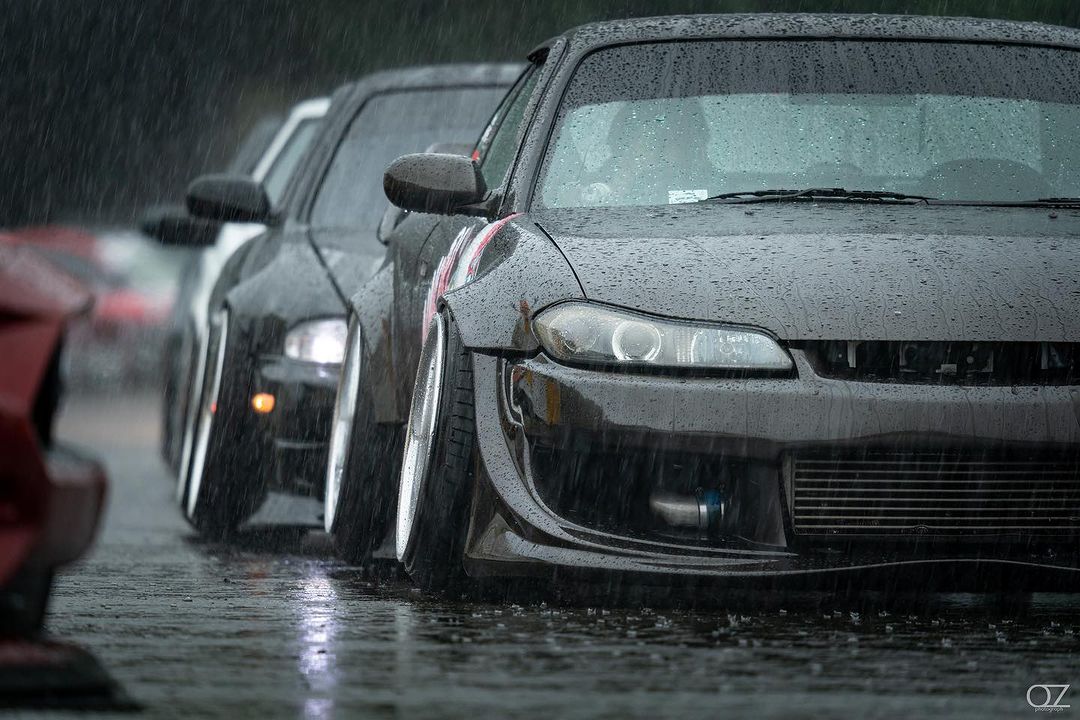
Think of stance/onicamber, but on steroids. Outlip style, similar to Subani style, was popularized by drifters in Japan and has slowly been adopted in other regions. This fitment involves having the tire inside the fender while the wheel aggressively protrudes.
As with the other advanced types of fitment, you’ll need some extreme tire stretch, coils/air, all the adjustable arms, etc. Of course, with this kind of fitment, you’ll need to dial it in yourself. Some random at Les Schwab won’t be able to help unless you do 90%. Every car is different so there isn’t a list of generic specs that we can recommend.
If you’re looking to pull off this kinda fitment, there aren't a bunch of resources to help you. We recommend contacting someone who’s done it for advice, or we can lend some assistance. But again, this is for advanced users; not advisable for someone building their first stance car.
Unlike other types of fitment, outlip style technically has racing heritage. It was originally used in drift after all. Because of this, we can't say that it ruins performance - there’s proof of the contrary. However, a lot of planning is needed to make sure the wheel won’t slam the fender at 80 mph. This is why it’s so difficult to pull off. It’s an art.
Wrap up
We talked about all the major types of fitment you’ll see. With OEM/tucked fitment, the wheel is sunken into the fender; flush/stance, the wheel or tire is flush with the fender; and poke, the wheel sticks out past the body. Now you know how these are achieved and whether they help or hurt performance.
Need inspiration? Check out our fitment gallery! Or upload your own car to help out others - You’re automatically entered to win prizes in our Fitment Battles.

